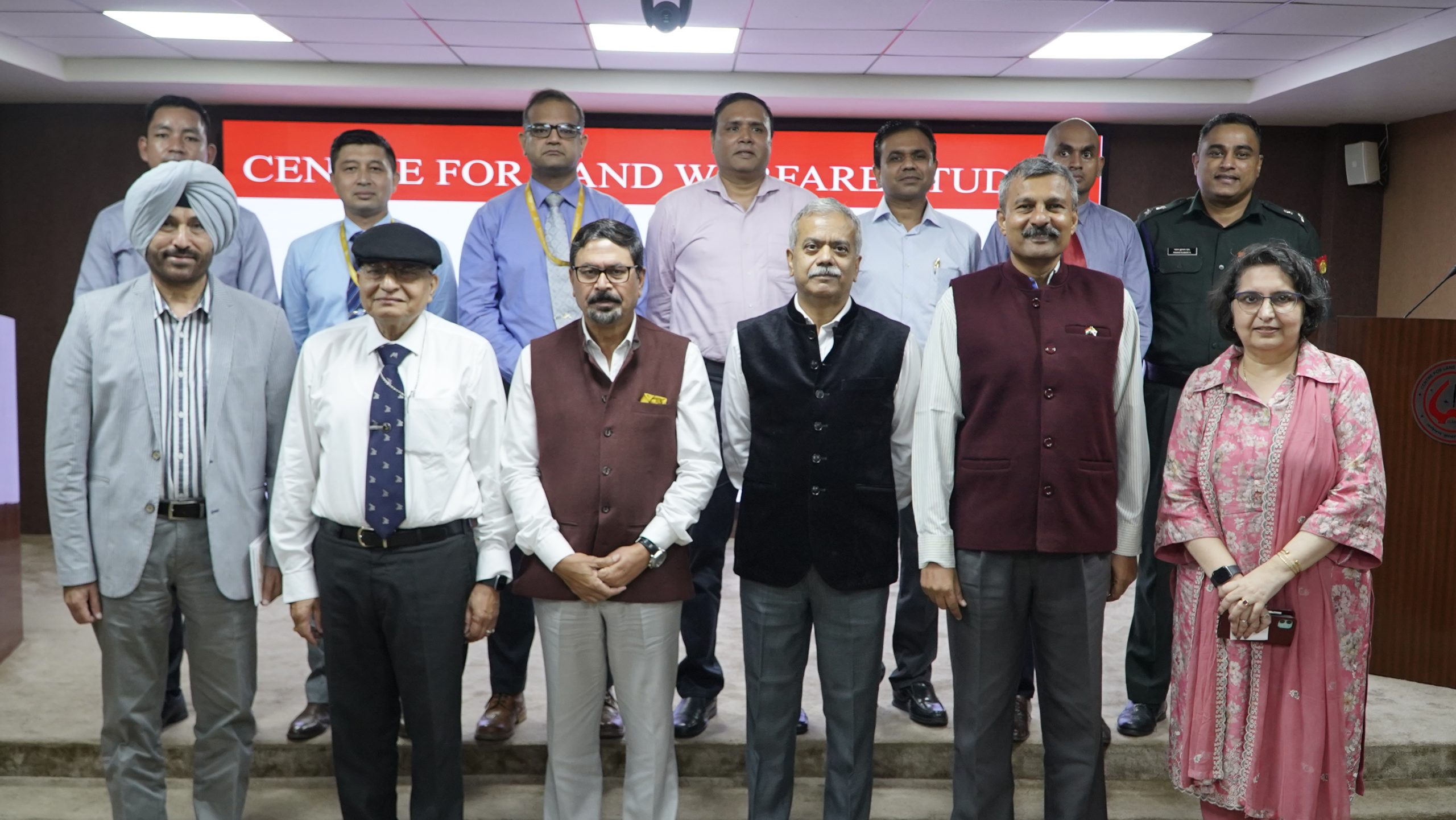In March 2018, the National People’s Congress (NPC) voted to amend China’s constitution, removing the two-term limit for the presidency that had been in place since 1990. Of the 2,964 NPC delegates, 2,959 voted in favor of the amendment, effectively paving the way for Xi Jinping to remain President indefinitely. This move marked more than just a political shift—it was the culmination of a decade-long transformation that had fundamentally reshaped China under Xi’s leadership.
During his first decade in power, Xi pursued three core political objectives: consolidating power within the Communist Party of China (CPC), reviving “red” communist ideology, and elevating China’s status on the global stage. By the time of the 20th Party Congress in October 2022—where Xi secured an unprecedented third term as General Secretary—he had effectively achieved the first two goals and positioned China as a significant global actor.
Looking ahead, Xi has set his sights on a new set of strategic objectives: the “reunification of the motherland” (with particular reference to Taiwan), transforming China into a true global superpower, and promoting China’s political model as a universal alternative to Western liberal democracy
The Foundation: Three Pillars of Power
When Xi Jinping ascended to power in 2012, his immediate political goals centered around three fundamental objectives that would define his first decade in office. These weren’t merely policy preferences but existential imperatives for his leadership.
Consolidating Power: From Collective to Personal Rule
Xi’s first and perhaps most crucial goal was the consolidation of power—a dramatic departure from the collective leadership model that had governed China since Deng Xiaoping’s reforms. During his initial years, remnants of the old system persisted, with the Shanghai Clique and Communist Youth League factions maintaining significant representation in his government. However, Xi systematically dismantled this pluralistic structure through the anti-corruption campaign (the longest campaign in Communist China).
By the 19th Party Congress in 2017, Xi had already begun reshaping the political landscape, but it was the 20th Party Congress in October 2022 that marked his complete triumph. The 20th NPC served as a “norm-smashing event” where Xi broke with established precedent not just by securing a third term, but by filling the Politburo with his secretaries [Mìshū: 秘书] and loyalists who had served under him during his provincial leadership days. The age-68 retirement rule was suspended for his allies, while potential rivals were unceremoniously pushed into early retirement.
The moment that perhaps best symbolised Xi’s total consolidation of power occurred during the 20th NPC itself. The very public purge of Hu Jintao during the NPC was symbolic of Xi’s total control over the Party. Xi had successfully transitioned China from “nine dragons controlling water” [Jiǔlóng zhìshuǐ: 九龙治水] to “one position as the highest authority” [Dìng yú yīzūn: 定于一尊].
Revival of the Leninist Party: Red Communism’s Renaissance
Xi’s second major goal represented nothing less than the ideological resurrection of the Communist Party of China. Unlike his predecessors who had largely relegated ideology to ceremonial status, Xi embarked on what can be termed an effort to “rebuild the ideological faith of the Leninist Party”. This wasn’t merely about political control—it was about reviving what Xi saw as the Party’s revolutionary essence.
Xi’s approach combined classic Marxism with contemporary Chinese characteristics, officially adopting “Xi Jinping Thought on Socialism with Chinese Characteristics for a New Era”
[Xíjìnpíng xīn shídài zhōngguó tèsè shèhuì zhǔyì sīxiǎng; 习近平新时代中国特色社会主义思想] as the guiding ideology. This represented a return to the ideological dominance that characterised the Mao era, reversing Deng Xiaoping’s pragmatic “learn from practice” approach. For instance, Xi’s political ideology has been added in the school curriculum in China and ‘Red Culture’ has been added in courses for graduate students.
The revival extended beyond theory to practice, with Xi launching massive institution-building programs that restructured Party organisations, strengthened intra-Party norms and disciplines, and intensified propaganda and thought policing. This ideological revival was not just for domestic purposes but to position China’s model as an alternative to Western liberal democracy.
Empowering China on the Global Stage
Xi’s third foundational goal was to elevate China’s influence at a global stage. This ambition manifested through multiple channels, most notably the Belt and Road Initiative, which Xi has used to expand China’s influence across Asia, Africa, and Europe. Xi’s global strategy encompasses economic, military, and soft power dimensions. China has dramatically increased its military aid to strategic regions, with Chinese military assistance serving as “a tool of foreign and security policy” particularly in the Indo-Pacific, Russia-Eurasia, and Sub-Saharan Africa. This represents a significant shift from China’s traditional non-interference policy to active global engagement.
The success of this strategy is evident in China’s enhanced global standing. As Xi declared at the Belt and Road Forum, flanked by world leaders including Vladimir Putin and UN Secretary-General António Guterres, China would “make relentless efforts to achieve modernisation for all countries” and work to build a “shared future for mankind”. This rhetoric reflects Xi’s vision of China not just as a global power, but as the architect of a new international order.
The Next Horizon: Three Emerging Goals
Having achieved his initial objectives, Xi has set his sights on even more ambitious targets that will likely define his third term and beyond.
“Reunification of the Motherland”: The Taiwan Imperative
Xi’s most immediate territorial goal focuses on what Beijing terms the “reunification of the motherland,” encompassing both Hong Kong and Taiwan. The Hong Kong component has already been largely achieved. In 2020, Xi oversaw the passage of a comprehensive national security law that “clamped down on political opposition in the city, especially pro-democracy activists”. By October 2022, Xi could confidently declare that “China has achieved comprehensive control over Hong Kong turning it from chaos to governance”.
Taiwan represents the next and far more challenging phase of this reunification agenda. Xi’s approach to Taiwan reflects his broader strategic patience—he understands that achieving this goal may require different methods than those employed in Hong Kong, but the objective remains non-negotiable.
Global Power: From Regional Influence to Global Presence
Xi Jinping’s second major goal for his third term is to firmly establish China as a global power—a nation with comprehensive influence that extends far beyond its immediate region. This ambition involves not only strengthening military and economic capabilities but also achieving leadership in technology, global finance, and international norm-setting. Xi has consistently emphasised that China must “take center stage in the world,” highlighting his belief in China’s unique capacity to meet the challenges of the 21st century.
China’s global ambitions are particularly visible in its approach to international institutions and global governance. Rather than merely integrating into existing Western-dominated systems, China under Xi aims to reshape global governance to better reflect its own values and strategic interests. The creation and success of institutions such as the Asian Infrastructure Investment Bank (AIIB) and the Shanghai Cooperation Organization (SCO) underscore China’s growing capacity to influence international rules and frameworks, marking a significant shift from regional actor to global player.
Universalising “Socialism with Chinese Characteristics”
Perhaps Xi’s most ambitious goal involves transforming “Socialism with Chinese Characteristics” from a national development model into a universalistic ideology that can compete with liberal democracy. This represents a fundamental shift from Deng Xiaoping’s focus on domestic development to Xi’s vision of China as an ideological beacon for the world.
Xi’s approach to this goal is evident in China’s increasing emphasis on promoting its development model to other countries, particularly in the Global South. Chinese officials now openly present their system as superior to Western democracy, arguing that it provides stability, efficiency, and long-term planning capacity that democratic systems lack. This ideological export is supported by concrete assistance, including development aid and technical expertise.
The Legacy Imperative: Three Dimensions of Historical Greatness
With Xi in the middle of his third term, his focus is increasingly turning to legacy—how he will be remembered in Chinese history and what enduring impact his leadership will have on China and the world. His legacy aspirations operate across three interconnected dimensions.
Political Legacy: Standing with Mao
Xi’s first legacy goal involves achieving the same towering status in Chinese political history as Mao Zedong. This ambition is already partially realised through the enshrinement of “Xi Jinping Thought” in the Party constitution, an honour previously accorded only to Mao. However, Xi seeks to go beyond symbolic recognition to fundamental transformation of China’s political system.
Xi envisions making China’s political system as universally applicable as liberal democracy once appeared to be. This involves demonstrating that authoritarian governance under Party leadership can deliver prosperity, stability, and global influence more effectively than democratic alternatives. The success of this goal would position Xi not just as a Chinese leader but as the architect of a new model of governance with global relevance.
Economic Legacy: Completing Deng’s Vision
Xi’s second legacy aspiration involves fulfilling the four modernisation goals that Deng Xiaoping initiated but could not complete. While Deng aimed to transform China from a closed, impoverished nation into a growing economy, Xi seeks to complete the journey to comprehensive modernisation. This involves not just achieving high per capita income but creating a modern, technologically advanced society that serves as a model for other developing nations.
Xi’s approach to this economic legacy differs significantly from his predecessors. Rather than relying primarily on market mechanisms, Xi has emphasised state control and direction, promoting what he calls “common prosperity“. This reflects his belief that only strong Party leadership can ensure that economic development serves broader social and political goals rather than creating inequality and instability.
Global Power Legacy: China as World Leader
Xi’s third and perhaps most ambitious legacy goal involves establishing China as the world’s dominant power—not just economically and militarily, but in terms of setting global norms and values. This represents a complete reversal of China’s traditional approach of avoiding global leadership responsibilities in favor of domestic development.
Xi’s vision of Chinese global leadership encompasses multiple dimensions. Economically, he seeks to position China at the center of global trade and investment flows through initiatives like the Belt and Road. Technologically, he aims for Chinese dominance in next-generation technologies like artificial intelligence and quantum computing. Institutionally, he wants Chinese values and approaches to governance to shape international organisations and global governance structures.
Conclusion
As Xi Jinping surveys the political landscape from his position of unprecedented power, he sees not the end of a transformation but its beginning. His achievements in consolidating power, reviving ideological commitment, and elevating China’s global status represent the foundation for even more ambitious goals. The reunification of Taiwan, the establishment of Chinese as a global power and the universalisation of the Chinese model remain works in progress that will likely define not just Xi’s remaining years in power but China’s trajectory for decades to come.
Xi’s political goals reveal a leader who thinks in terms of historical epochs rather than political cycles. He has positioned himself not merely as China’s current leader but as the architect of its return to what he sees as its rightful place at the center of world affairs. Whether he can achieve these sweeping ambitions remains to be seen, but his first decade in power suggests that Xi Jinping’s political goals will continue to reshape China.
The question now is not whether Xi has the power to pursue these goals—the 20th Party Congress settled that question decisively. The question is whether China and the world are prepared for the consequences of a leader whose political ambitions extend far beyond national boundaries to encompass nothing less than the reconstruction of the international system itself.














